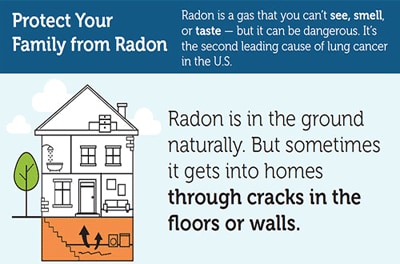What is radon gas? Is it hazardous?
Is radon really bad for you?
Breathing radon over time increases your risk of lung cancer. Radon is the second leading cause of lung cancer in the United States. Nationally, the EPA estimates that about 21,000 people die each year from radon-related lung cancer. Only smoking causes more lung cancer deaths.
If you can keep your indoor radon degrees at 2 pCi/L or reduced, you'll deal with very low raised risk of creating lung cancer cells as a result of radon. Only 2 non-smokers out of 1,000 will develop lung cancer cells specifically due to the exposure when you reach the 1.3 pCi/L degree that is regular for interior air.
Chronic exposure to radon gas enhances the threat of developing lung cancer cells. In the United States, an approximated 21,000 people die from radon-related lung cancer cells every year (compared to 160,000 lung cancer deaths from smoking), according to the EPA. Radon is the second leading cause of lung cancer, as well as it's the leading reason for lung cancer in nonsmokers, according to the agency.
Is radon mitigation really necessary?
When radon gas enters the body, it exposes the lungs to small amounts of radiation. In small quantities, experts say this is harmless. However, in persistent exposures or larger quantities, radon can damage the cells of the lining of the lungs, increasing a person's chance of developing lung cancer.
This is the degree of around 90 percent of residences in the United States. The EPA recommends that homeowners do something about it when direct exposure levels get to over 4 picoCuries per litre, due to the idea that increasing radon exposure is associated to a considerably greater threat for cancer cells. Around one in 15 residences in the United States has elevated radon levels. The odorless gas can go into houses through fractures in wall surfaces, floorings and structures.
- Lung cancer cells danger climbs 16% per 2.7 pCi/L boost in radon exposure.
- Radon gas is a naturally-occurring result of the radioactive degeneration of Uranium in the dirt.
- Relying on your geographical location, the radon test radon degrees of the air you take a breath beyond your home raydon poisoning might be as high as 0.75 pCi/L.
- The US EPA has actually put it simply, mentioning, "Any type of radon exposure has some danger of causing lung cancer cells.

How do you eliminate radon?
Possible symptoms include shortness of breath (difficulty breathing), a new or worsening cough, pain or tightness in the chest, hoarseness, or trouble swallowing. If you smoke and you know you've been exposed to high levels of radon, it's very important to quit smoking.
The EPA suggests doing a second examination to validate the first findings if the test results suggest radon degrees at or over 4 pCi/L (picocuries per litre). House owners can take actions to minimize the radon focus if the standard of the 2 Click for more temporary radon examinations is 4 pCi/L or higher. The EPA keeps in mind that given that there is no secure degree of radon gas direct exposure, minimizing radon to below 2 pCi/L likewise helps reduce the number of radon-related lung cancers. Breathe sufficient radon over the years, and it can raise your danger of lung cancer cells.
How hazardous is radon gas?
However, when radon gets caught inside your home-- after entering a residence via joints in wall surfaces, basement floors, structures and various other openings-- it might concentrate at hazardous degrees. Actually, radon is the second leading source of lung cancer cells, in charge of an estimated 21,000 fatalities each year in the USA, adding to lung cancer's condition as the # 1 cancer killer. When inhaled right into the lungs, it can damage DNA and also cause lung cancer cells. The EPA's suggested level for radon reduction is 4.0 pCi/L or above. It is nevertheless a worthy gas without chemical affinity yet is easily influenced by air motions and also pressure.
How long does it take for radon to cause cancer?
Fact: You will reduce your risk of lung cancer when you reduce radon levels, even if you've lived with an elevated radon level for a long time. Keep in mind that radon levels below 4 pCi/L still pose some risk and that radon levels can be reduced to 2 pCi/L or below in most homes.